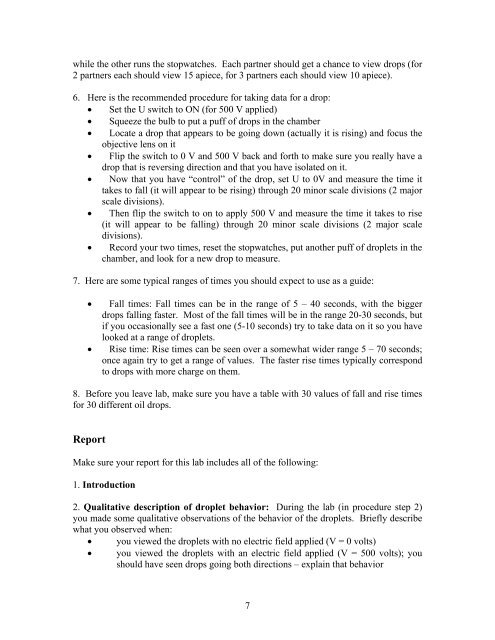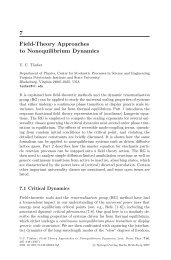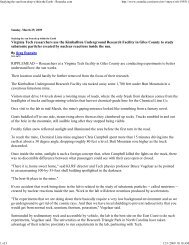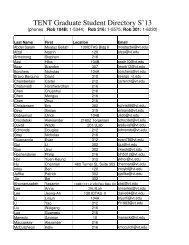Millikan writeup - Physics
Millikan writeup - Physics
Millikan writeup - Physics
You also want an ePaper? Increase the reach of your titles
YUMPU automatically turns print PDFs into web optimized ePapers that Google loves.
while the other runs the stopwatches. Each partner should get a chance to view drops (for<br />
2 partners each should view 15 apiece, for 3 partners each should view 10 apiece).<br />
6. Here is the recommended procedure for taking data for a drop:<br />
Set the U switch to ON (for 500 V applied)<br />
Squeeze the bulb to put a puff of drops in the chamber<br />
Locate a drop that appears to be going down (actually it is rising) and focus the<br />
objective lens on it<br />
Flip the switch to 0 V and 500 V back and forth to make sure you really have a<br />
drop that is reversing direction and that you have isolated on it.<br />
Now that you have “control” of the drop, set U to 0V and measure the time it<br />
takes to fall (it will appear to be rising) through 20 minor scale divisions (2 major<br />
scale divisions).<br />
Then flip the switch to on to apply 500 V and measure the time it takes to rise<br />
(it will appear to be falling) through 20 minor scale divisions (2 major scale<br />
divisions).<br />
Record your two times, reset the stopwatches, put another puff of droplets in the<br />
chamber, and look for a new drop to measure.<br />
7. Here are some typical ranges of times you should expect to use as a guide:<br />
<br />
<br />
Fall times: Fall times can be in the range of 5 – 40 seconds, with the bigger<br />
drops falling faster. Most of the fall times will be in the range 20-30 seconds, but<br />
if you occasionally see a fast one (5-10 seconds) try to take data on it so you have<br />
looked at a range of droplets.<br />
Rise time: Rise times can be seen over a somewhat wider range 5 – 70 seconds;<br />
once again try to get a range of values. The faster rise times typically correspond<br />
to drops with more charge on them.<br />
8. Before you leave lab, make sure you have a table with 30 values of fall and rise times<br />
for 30 different oil drops.<br />
Report<br />
Make sure your report for this lab includes all of the following:<br />
1. Introduction<br />
2. Qualitative description of droplet behavior: During the lab (in procedure step 2)<br />
you made some qualitative observations of the behavior of the droplets. Briefly describe<br />
what you observed when:<br />
<br />
<br />
you viewed the droplets with no electric field applied (V = 0 volts)<br />
you viewed the droplets with an electric field applied (V = 500 volts); you<br />
should have seen drops going both directions – explain that behavior<br />
7

















